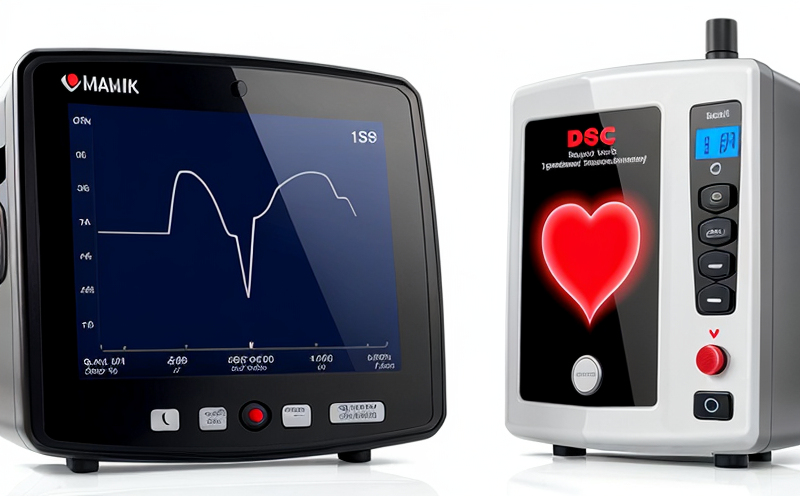Magnetically Induced Displacement Force Testing for Cardiovascular Implants
The Magnetically Induced Displacement Force (MIDF) testing method is a critical component of the quality assurance and compliance processes in medical device manufacturing. This test evaluates the stability, durability, and safety of cardiovascular implants under dynamic forces that mimic real-world conditions during use.
During MIDF tests, magnetic fields are applied to simulate physiological stresses experienced by cardiac devices within the body. The goal is to assess how well these devices can withstand displacement forces without compromising their functionality or integrity. This testing ensures that medical devices meet stringent regulatory requirements and perform reliably under expected conditions in clinical settings.
The MIDF test protocol typically involves placing the device on a specialized fixture within a magnetic field generated by an external coil system. The strength of this field can be adjusted to simulate various levels of force exerted on the implant during normal operation or accidental trauma. Specimens are carefully prepared according to industry standards before being subjected to multiple cycles of displacement forces.
The results from these tests provide valuable insights into potential failure modes, helping manufacturers identify areas for improvement early in the development process. Compliance officers rely heavily on accurate and consistent MIDF testing data when making decisions about product design changes or submitting regulatory filings.
For R&D engineers working on new cardiovascular technologies, MIDF testing offers a way to predict performance across different scenarios without having to conduct extensive clinical trials. By incorporating this technology early in the R&D cycle, companies can reduce development time and costs associated with late-stage failures due to unforeseen issues.
When selecting an appropriate testing method for your cardiovascular device, consider factors such as the specific type of implant being developed (e.g., stent, valve, pacemaker lead), expected environmental conditions, and anticipated patient demographics. These details will influence both the setup requirements and interpretation of results from MIDF tests.
| Standard | Description |
|---|---|
| ISO 14708-2:2019 | Guidelines for testing cardiovascular stents and other similar devices. |
| ASTM F3165-21 | Standard practice for evaluating the mechanical performance of intracardiac devices using magnetic field-induced displacement forces. |
Applied Standards
The following international standards provide comprehensive guidelines for conducting MIDF tests on cardiovascular implants:
- ISO 14708-2:2019: This document covers the testing of cardiovascular stents and similar devices, including methodologies for assessing their durability under simulated physiological conditions.
- ASTM F3165-21: This standard describes a procedure for evaluating the mechanical performance of intracardiac devices by subjecting them to magnetic field-induced displacement forces. It includes recommendations on test setup, specimen preparation, and data analysis techniques.
Industry Applications
MIDF testing finds application across various stages of the medical device lifecycle:
- Research & Development (R&D): Engineers can use MIDF tests to simulate different types of forces that might affect an implant during its intended use. This allows them to optimize design parameters and identify potential weak points early in development.
- Manufacturing: Production facilities employ MIDF testing as part of their quality control process to ensure consistency among batches of implants produced under identical conditions.
- Regulatory Compliance: Manufacturers submit results from MIDF tests alongside other compliance documentation when applying for approvals from regulatory bodies like the FDA or EMA.
| Stage of Lifecycle | Application |
|---|---|
| Research & Development (R&D) | Simulate forces affecting implants during use; optimize design parameters. |
| Manufacturing | Ensure consistency among batches of implants produced under identical conditions. |
| Regulatory Compliance | Submit results alongside other compliance documentation for regulatory approvals. |
Customer Impact and Satisfaction
Clients who partner with our laboratory for MIDF testing benefit from enhanced product reliability, faster time-to-market, and reduced risk of post-market recalls. Here’s how:
- Enhanced Reliability: By identifying potential failure points early in the development process through rigorous MIDF testing, clients can improve overall device quality.
- Faster Time-to-Market: Early detection of issues allows for quicker resolution and less time spent on rework or redesign cycles.
- Reduced Risk of Recalls: Ensuring compliance with applicable standards helps minimize the likelihood of recalls after devices have entered the market.





